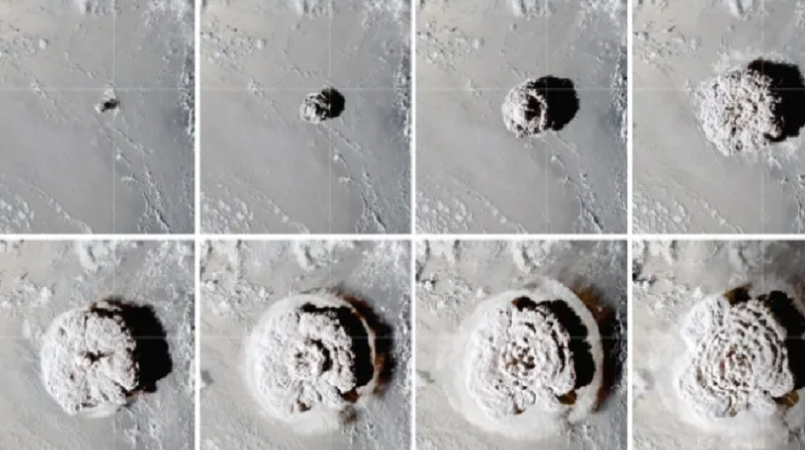
Scientists have described a massive "magma hammer" they say slammed the underside of the Tonga volcano which erupted so spectacularly in January.
An analysis of seismic waves has revealed four individual events that are interpreted to be thrusts of molten rock beneath the underwater mountain.
Occurring within a five-minute period, each of these blows is calculated to have had a force of a billion tonnes.
It's a further revelation about the behaviour of Hunga-Tonga Hunga-Ha'apai.
The seamount produced the biggest atmospheric explosion ever recorded by modern instrumentation - far bigger even than any nuclear bomb test conducted after WWII.
It displaced some 10 cubic km of rock, ash and sediment, much of it exiting through the volcano's mouth, or caldera, to shoot straight up into the sky, like a "shotgun blast" as one geologist called it.
Scientists have gathered here in Chicago at the American Geophysical Union (AGU) Fall Meeting to compare the latest results of their investigations into what happened.
Dr Yingcai Zheng, from the University of Houston, detailed his team's analysis of the Magnitude 5.8 seismic waves generated just over 10 minutes into the climactic eruption on 15 January.
These signals were picked up at more than 400 monitoring stations around the globe.
Dr Zheng attributes them to a pulse of magma moving up from below the mountain and hitting the base of the caldera.
"I think it could be like a new batch of magma suddenly just reaching into the magma chamber and over-pressurising the chamber," he said. "The pulse of the magma is travelling up at high speed and it's like a train hitting the base of the wall. It hammered four times within 300 seconds," he told BBC News.
